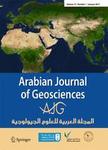版权所有:内蒙古大学图书馆 技术提供:维普资讯• 智图
内蒙古自治区呼和浩特市赛罕区大学西街235号 邮编: 010021

作者机构:School of Environment and Architecture University of Shanghai for Science and Technology Shanghai China Key Laboratory of Geohazard Prevention of Hilly Mountains (Ministry of Natural Resources) Fujian Key Laboratory of Geohazard Prevention Fuzhou China Department of Civil and Environmental Engineering National University of Singapore Singapore Singapore Department of Civil Engineering Shanghai University Shanghai China
出 版 物:《Arabian Journal of Geosciences》
年 卷 期:2022年第15卷第9期
页 面:1-26页
学科分类:0709[理学-地质学] 081803[工学-地质工程] 07[理学] 08[工学] 0818[工学-地质资源与地质工程]
摘 要:The precise prediction of ground settlement troughs due to underground tunnelling is of great significance in geotechnical design. The traditional approaches for ground movements are mostly established in individual or underabundant cases. It is necessary to further modify the traditional methods to make them more widely applicable. In this study, two modified Peck formulas of settlement trough width parameters for surface and subsurface ground caused by tunnel excavation are proposed respectively by the numerous measured data from the field projects and model tests. Firstly, the modified fitting formula of width parameter is for surface settlement trough is obtained based on the data from 11 field cases, which can capture the main parameters, including the tunnel radius R, tunnel depth h, and soil physical characters (such as, internal friction angle φ). Additionally, 3 sets of measured surface settlement data from 2 field cases are selected and compared with the results calculated by the proposed formula. Then, by analyzing the measured settlement data from 22 field cases and 2 model tests statistically, the modified formula of subsurface settlement trough width parameter $${i}_{z}$$ is proposed and verified by 4 sets of measured data from 2 projects. Finally, to check the overall applicability of the proposed formulas, the surface and subsurface settlements at different depths in 3 field cases and a model test are calculated and compared with the measured data. The results show that the ground settlements calculated by the proposed modified formulas are in good agreements with field measurements.